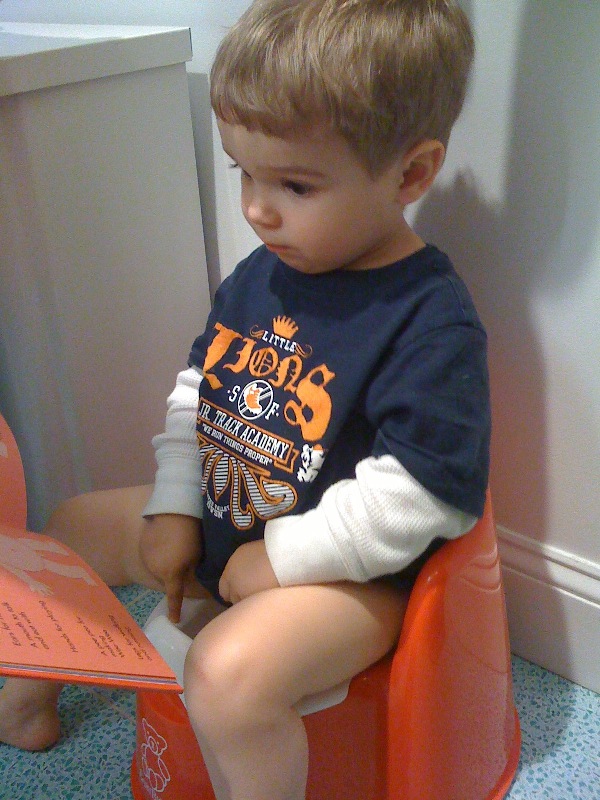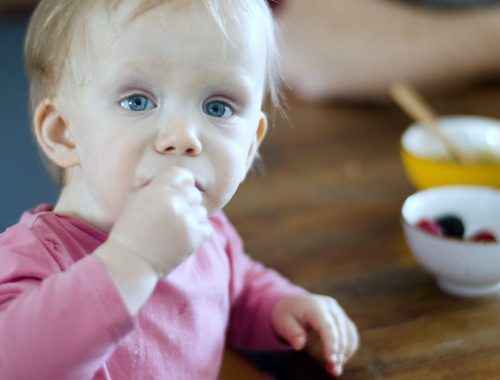
Mastering the Art of Baby Potty Training
Hello there, parents and caregivers! One of the significant milestones in a baby’s life is learning to use the potty. It’s a journey that takes a bit of time and patience, but with the right approach, you can make the process smoother and less messy. In this guide, we’ll walk you through the steps to successfully potty train your little one.
The Right Time to Start
Signs of Readiness
Potty training isn’t a one-size-fits-all process. It’s essential to look for signs that your baby is ready to start the potty training journey:
- Age: Most children start showing readiness between 18 and 24 months, but it can vary. Some may be ready earlier, while others may need more time.
- Interest: If your baby shows curiosity about using the toilet or imitates others, it’s a positive sign.
- Dry Periods: If you notice that your baby’s diaper is dry for more extended periods, it may indicate bladder control is developing.
- Communication: Your baby might express discomfort with a dirty diaper or let you know when they need to go.
Step 1: Preparing for Potty Training

Get the Right Equipment
Potty Chair
Consider getting a small potty chair designed for little ones. It’s more comfortable and less intimidating than a full-size toilet.
Training Pants
Switch from diapers to training pants to help your baby get used to the feeling of wetness.
Step Stool
A step stool is handy for your baby to reach the sink for handwashing.
Choose the Right Time
Pick a time when you can focus on potty training without too many interruptions. Avoid starting during significant life changes or stressors, like moving or a new sibling arriving.
Familiarize Your Baby
Let your baby get familiar with the potty chair. Place it in the bathroom and let them sit on it fully clothed a few times. This helps them get comfortable with the new addition.
Step 2: The Training Process
Create a Routine
Establish a consistent potty routine. Encourage your baby to use the potty chair at regular intervals, such as after waking up and before bedtime.
Use Positive Reinforcement
Praise your baby for using the potty successfully. Offer verbal praise, claps, and a small reward like a sticker.
Watch for Signs
Be attentive to your baby’s cues. If they start showing signs of needing to go, take them to the potty immediately.
Be Patient
Potty training takes time and patience. Accidents will happen, and it’s essential not to scold or show frustration. Instead, reassure your baby that it’s okay and try again next time.
Step 3: Nighttime Training
Nighttime Training
Nighttime training often takes longer than daytime training. Here are some tips to help your baby transition to dry nights:
Limit Drinks
Limit your baby’s liquid intake in the hours leading up to bedtime.
Use Training Pants
Use training pants designed for nighttime to help manage accidents.
Be Consistent
Continue with the potty routine at night, even if it takes a while for your baby to stay dry.
Common Challenges
Resistance
Your baby may show resistance or fear of the potty. Try to understand their concerns, offer reassurance, and make the potty experience positive and stress-free.
Regression
It’s not uncommon for children to regress temporarily during potty training. This can happen due to changes or stress. Be patient and continue with the routine.
Constipation
Some children may become constipated during potty training. Ensure they have a balanced diet with fiber and encourage regular bathroom visits.
Tips for Success
Be Consistent
Consistency is key to successful potty training. Stick to the routine, even on busy days.
Stay Calm
Potty training can be frustrating at times, but it’s crucial to remain patient and calm. Your baby will pick up on your emotions.
Celebrate Milestones
Celebrate the small victories along the way. Each successful potty trip is a step in the right direction.
Ask for Help
If you’re facing challenges or your baby seems resistant, don’t hesitate to seek advice from your pediatrician or a childcare expert.
The Final Step: Graduation
The Big Transition
As your baby becomes more independent with using the potty, you can transition to using the regular toilet with a child-sized seat. This is often an exciting milestone for both parents and children.
Celebrate the Achievement
Make the transition a celebration. Let your child pick out their favorite child-sized seat and celebrate the achievement with a little party or special treat.
Wrapping It Up
Potty training is a significant milestone in your baby’s development. While it can be challenging, it’s also a rewarding journey that builds your child’s independence and self-confidence. Remember that each child is unique, and potty training may take different amounts of time for different kids.
Stay patient, be supportive, and keep the process positive. Before you know it, your baby will be a potty-trained pro, and you can both celebrate this significant milestone in their growing independence. Happy parenting!
You May Also Like

Navigating Discipline: Exploring Approaches to Child Correction and Their Implications
2023-11-23
Tips for Starting Child-Led Diversification
2022-12-28

